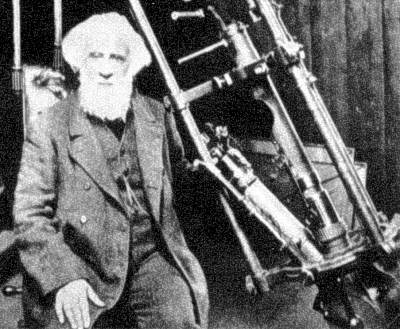


Sir William Huggins writes :
"On the evening of the 29th of August, 1864, I directed the telescope for the first time to a planetary nebula in Draco (NGC 6543). The reader may now be able to picture to himself to some extent the feeling of excited suspense, mingled with a degree of awe, with which, after a few moments of hesitation, I put my eye to the spectroscope. Was I not about to look into a secret place of creation ? I looked into the spectroscope. No spectrum such as I expected ! A single bright line only !" [this was the [OIII] doublet 4959+5007]
And to illustrate the contribution from amateurs to science, Simon Schaffer writes :
"The person who actually worked out what the different gases were was a grocer called William Huggins (1824-1910) who was a pioneer of spectroscopy. He made so much money from being a grocer he was able to retire fairly young and built a private observatory in Tulse Hill (where he lived). He purchased a very high quality telescope and placed prisms in front of it, turning it into an astrospectroscope. He measured the spectra of nebulae and stars and invented astrophysics - the science that tells you what the stars and the nebulae are made of. "